When it comes to versatile plants, few realize that sunflowers are far more than ornamental plants that produce tasty seeds and edible sprouts.
In time of need, sunflowers can be used for food, managing illness, and for making items that may be difficult to manufacture from other resources. Even if you are good at scavenging and repurposing, sunflowers are a vital plant in terms of a renewable source of materials.
Here are some ways that you can get the most from sunflowers as well as tips for growing them in a variety of locations. Regardless of your age or the kinds of space limitations you are dealing with, you will be surprised at how much you can do with these plants now and in many different challenging situations.
Using Sunflowers to Make Cooking Oil
One of the most important things you can make from sunflowers is cooking oil. Unlike corn and other resources used for making oil, you will find that sunflower is easier to process and better for your health in the long run. In order to make one cup of oil, you will need approximately three to six good sized heads of sunflower seeds depending on the seed type. Black oil sunflower seeds will give you almost twice as much oil as conventional sunflower seeds.
Find out our Firefather’s Time-Tested Natural Cures and Household Remedies
The basic steps for making sunflower oil are as follows:
- Start off by removing the hulls from the sunflower seeds. The fastest, low tech way to achieve this goal is to take about ½ cup of sunflower seeds and lay them out in a single layer on a flat surface. Put them in a plastic bag or cover them with cloth if you have limited room. Next, run a rolling pin over them until the hulls crack. Finally, put the seeds into a bowl of cold water. Since the hulls are less dense than water, they will float to the top while the kernels will drop to the bottom. All you have to do from there is scrape the hulls from the water and drain out the water. Do not discard the hulls as you can grind them up and use them for other purposes.
- Next, take the sunflower kernels and grind them up until they make a fine paste. Do not add water. As the seeds mash up, they will also begin releasing liquid. At this stage, you can run the mash through an oil press in order to get the best tasting, or “cold pressed oil”.
- Roast the seeds for about 20 minutes at 300 degrees Fahrenheit. You will need to stir them every 5 minutes or so. Heating will release more oil from the sunflower seeds than simply running them cold through a press, however it will not taste as good or be as suitable for cooking. You can still use it for a food additive and for other purposes. Try experimenting with lower temperatures to see if they work better with different strains of seeds. Remember, also, growing conditions affect oil production in just about any plant, including sunflowers. If the growing season or conditions are very dry, or nutrients are limited, then you can also expect the seeds to produce less oil.
- After the seeds are heated up, you can run them through a strainer to obtain the most readily available oil, or run the whole thing through an oil press.
- If you decide to use just a strainer, there may still be a good bit of oil left in the mash. You can store the mash away in the freezer and then thaw it out and press the oil from it as needed. Sunflower oil will last in the refrigerator for about one month.
- There are several different kinds of oil presses on the market. Inexpensive hand crank presses will produce about 1 ½ cups of oil in 20 minutes of fast cranking. If you are interested in low tech options that do not require electricity, this may be your best option. That being said, if you need to make a lot of oil in a very short period of time, then you may want to invest in a motorized oil press.
Sunflowers for Health and Wellness
Aside from being excellent sources of Vitamin A, Vitamin E, and protein, different parts of the sunflower plant can be used for other needs. Here are just a few things to consider:
- When combined with alcohol and water, boiled sunflower seeds can be used for coughs, colds, and lung irritation. Depending on the recipe, it is hard to say whether it is the sunflower or the alcohol that is actually producing a change. Sunflower wine, however, is not difficult to make and may have medicinal properties that aren’t much written about these days. Once the wine is ready for use, you may want to add a few drops of sunflower oil back into it for additional benefit. In fact, sunflower wine[1] or a similar recipe may also be useful for treating malaria and reducing other kinds of fevers. You can also use sunflower leaves as part of reducing fevers.
- Tea made from the seeds can also be used for lung and breathing related ailments.
- Tea made from the leaves has also been used for lung ailments and fevers. This tea may also be useful for treating malaria when nothing else is available. It is also well suited as a diuretic and expectorant. You can also make poultices from sunflower leaves to treat insect and snake bites. These poultices can also be used to speed healing since they also have astringent chemicals in them.
- Tea made from sunflower petals can be used for sore throats and inflammation. As with any other herbal remedy made into teas, do not forget there is a difference in the usage of dried vs fresh materials. Do some research on different tea recipes to find out which one you need to have onhand.
- The roots can also be made into a wash or soaking rinse for arthritis and aching joints.
- Aside from the health benefits of sunflower on its own, sunflower oil works well as a carrier for other essential oils that will be used as bath oils and massage oils.
Making Fabric from Sunflowers
As with other plants that have thick stems, sunflower stems also contain fibers that can be used for making rope and fabric. Unfortunately, the methods for doing this are not well documented, so you will have to do some experimenting to see what works best.
Here are some basic guidelines to work with:
- Making fabric from sunflower stems is similar to working with hemp[2] in the sense that your objective is to isolate the long fibers that run up and down the stems and then use them to make thread that can be woven into fabric.
- Start off by slicing the stems and soaking the pieces in water for 5 to 10 days. If you soak the stems too long, the fibers will become brittle. Failure to soak the stems long enough may make the fibers harder to remove. This process is known as retting. Essentially, your goal will be to break down the glues and other bonding materials that keep the fibers you want tightly bound within the stalk. Retting can also be done by simply leaving the cut stalks outdoors for several weeks. Both forms of retting rely on bacteria and enzymes to break down the glues that hold the stem parts together. You may also want to do some research on enzymes and micro organisms that are commonly used to ret flax and hemp to see if they will accelerate the retting process.
- If the fibers are not easy to remove after retting, you will need to “break” the stems in order to help loosen up the fibers. Essentially, breaking in this context refers to beating on the stalks in order to make them as pliable as possible as opposed to making the stems shorter. Before breaking the stems, it may also help to dry them out.
- After the stems are softened enough to remove the fibers, there may still be a good bit of wood and pulp attached them. Before you begin combing the fibers, you will need to beat them some more in order to remove as much wood as possible.
- Next, you can use combs made of plastic, wood, or metal to straighten out the sunflower fibers and remove more bits of wood and pulp. You may need several combs and work from the least fine to the most fine in terms of the closeness of the teeth.
- Once the fibers are combed and as aligned as possible in relation to each other, you can spin them into thread or yarn much as you would any other fiber used for making fabric. From there, you will either knit or crochet thread or yarn to make garments and other fabric based goods. You can also weave thinner and finer threads into more conventional textiles or fabrics.
Sunflower Paper
Making paper from sunflower stems is not so different from using cattails[3] or other plant based materials. Start bu removing the pulp from the stems, mix it with water and washing soda, and boil the mixture. Once the cellulose breaks down, you will need to grind the pulp up in a blender to make it as smooth as possible. Next, simply spread the wet pulp out onto screens in a thin layer and let it dry out.
You can use the same basic process as you would for making any other kind of parchment from natural or recycled materials.
If you have already tried making paper from recycled scraps, then you probably didn’t need to concern yourself with lightening up the paper or bleaching it. When you use natural products, however, the pulp will turn brown and may require lightening or bleaching.
There are several things you can try to achieve this goal:
- The easiest and cheapest way to lighten paper is to set it in the sun to let the colors “fade”. This process can be accelerated by misting some distilled water on the paper.
- As with many other things, bleach will also remove the color from sunflower paper. Use bleach sparingly because it will easily eat through the paper and damage it.
- Hydrogen peroxide may also help with whitening the paper.
Making Soap from Sunflowers
When it comes to making soap, the entire process revolves around turning fat into a molecule with one end that has an affinity for water while the other bonds with just about anything else that you might want to wash away with the water. The “saponification” process involves using a strong alkaline agent such as lye. Sunflowers provide oil that is rich in fat while ashes from burning their stems can be used to make potash.
Regardless of whether you are making soap from sunflower oil, animal fat, or other sources of fat, it is very important to take proper safety precautions and use the proper equipment. Both lye and potash are very dangerous substances that you should never use unless you are wearing goggles, gloves, and aprons that are resistant to chemicals. It is also very important to use mixing utensils and vessels that will not be damaged by lye.
Finally, I always prefer to work exclusively outdoors on days when the air is still when making soap. When in doubt, wear a mask with suitable filtration so that you do not inhale fumes from the lye.
If you have never made soap from scratch before, start off with the cold process method[4]. In this case, if you are using only sunflower oil and potash made from the stems, you will encounter several challenges.
To begin, plant based oils may or may not form a solid bar of soap. As long as the fats in the oil saponify, they will still act as a cleansing agent. Since bar soap will store away for longer periods of time, you can try laying out the liquid soap in thin layers and let it dry, and then crumble up the residue into flakes.
The amount of fat in the oil can change based on the soil the plants grew in as well as the temperature and rainfall amounts during the growing season. As a result, figuring out how much potash or lye to add can be a process of trial and error. You can use soap charts for this purpose, however refining the ranges takes years of experience and practice. While it may seem counter intuitive, larger batches of soap tend to work better because there is more material to work with. If you are going to make just a few bars of soap, your calculations and material measures must be very precise.
More than a few people have used soap recipes that work perfectly for making a large batch of soap, only to have it fail miserably when they cut the recipe in half or quarters. In all cases, the ratio of lye to fat worked well enough over larger quantities, but could not even out in smaller amounts. It is also important to realize that when you make cold process soap, the heat produced from the lye reacting will only last for so long.
As the soap cools, the reaction itself will slow even more and eventually stop. Since larger batches of soap involve using more material, they will also retain heat for a longer period of time. If you do not want to waste materials on large batches, at least consider looking into ways to keep the soap warm as long as possible throughout the saponification process.
Second, it is always important to realize that potash and lye are not exactly the same chemically. The formula for lye is NaOH, while the formula for potash is KOH. Even though both are strong alkalizing agents, forming a sold bar of soap requires lye. Since potash[5] is fairly easy to make, chances are this is what you will be using in a survival situations. You can still start off with using lye so that you get a good feel for the calculations involved in making soap before you move onto working with potash.
Many people that have made soap in a frying pan from animal fat and potash are often surprised at the amount of math required to make soap from other materials. In this case, if you are going to use sunflower oil as the main fat, you will need to carefully measure how much potash you use in relation to the oil[6]. If you use too much potash (or lye), it will not all be used up in the interaction that occurs during the saponification process.
No matter whether you wind up with a solid bar of soap or a liquefied form, excess lye or potash in the mix can burn your skin.
On the other hand, if you don’t use enough lye or potash, there will not be enough onhand to saponify the fat. Basically, all you will be left with is a very unpleasant lump of grease that won’t clean anything. There are many calculators available online, as well as some simple formulas that you can use by hand to ensure you get the right ratio of alkalizing agent to fat. You will also need a soap making scale that is accurate to .1 ounces.
During the process of making soap from sunflowers, you may develop an interest in adding essential oils, dyes for coloring, or other ingredients for various purposes. As long as the additional ingredients do not alter the ratio of water, fat, and potash, your soap should turn out just fine.
Radiation Management
There are three ways you can use sunflowers to help manage problems created by nuclear radiation.
First, as I have mentioned in other articles[7], consuming foods that shield your cells from radiation may help reduce illness associated with radiation exposure. While nothing can save you from exposure at “ground zero”, there are many chances to survive if you are located in the mid to mildly contaminated zones. Unfortunately, radiation sickness can still be formidable in these zones. Since sunflowers are rich in vitamins E and C, consuming them now may be a good way to stay as healthy as possible under these conditions.
Second, you can also use sunflowers to remove nuclear radiation from the soil. In fact, they have been used extensively in Hiroshima, Chernobyl, and Fukushima to remove cesium from the soil. There are also some strains of sunflower that were developed to remove uranium from the soil. While there is little information available about these strains, it appears they are readily available in Japan[8].
Third, it should also be noted that sunflowers can also remove radiation from contaminated water. For example, rafts or mats with sunflowers planted on them were used on the waterways contaminated by Chernobyl. The roots easily removed radioactivity from the water right along with lead and several other heavy metals. If you have a homestead and are concerned about radioactive contamination, sunflowers may be a useful tool in a time when nothing else is available.
Today, many people aren’t aware of the fact that radiation from Fukushima is rapidly becoming a serious problem along the western coast of the United States.
Radioactive signatures from Fukushima are now showing up in wine and other items produced from foods grown or raised in California.
To my thinking, sadly, it will not be long before everyone along the west coast of the United States will have to deal with the consequences of radiation exposure. While sunflowers may not solve every problem, they may just prove to be an important mitigation tool.
Potential Use for Water Purification
Chances are, if you have been looking into survival scenarios, then you already know that water purification will be a key to getting through both long and short term catastrophic disruptions.
You probably also know that boiling water is only one step in a comprehensive water safety plan that cannot be used until heavy metals and other toxins have been removed from the water first. As with removing pollution from the air, activated carbon is a key to both safe water and safe air. Fortunately, the pith or central area of sunflower stems provides a perfect material for making activated carbon. All you need to do is let the stalks dry out until they are as hard as wood, and then use them to make activated carbon.
It should also be noted that sunflower stalks can also remove heavy metals and many other contaminants from water[9].
Now would be a good time to experiment with developing sponges that can sit in the water and absorb these and other toxins. Alternatively, you can look to creating a filter material that you can simply pour the water through.
Unfortunately, at this time there is no information available on how sunflower stalks compare to bone char when it comes to removing heavy metals from water.
Therefore, it is still important to keep at least some bone char in your stockpile.
If You See This Plant in Your Backyard Burn It Immediately!
Other Ways to Use Sunflowers
Historically speaking, sunflowers have been used for far more than food and medicine. For example, the pith, or central area of the stalk is lightweight and floats easily on water. As a result, it was used extensively in Russia to fill life preservers and other flotation devices. Sunflower pith can also be used to make corks and pith hats.
The rising cost of fuels has driven many people to look for inexpensive sources of insulation. A number of researchers have been studying sunflower pith because it is an easy to obtain source of renewable materials. When mixed with certain glues and resins, some companies claim it is possible to produce a stable board that can be used for insulating buildings.
On the other hand, some of the early research on sunflower pith indicates that it is very susceptible to changes in moisture levels. While sunflower pith may work well in arid or dry areas where the humidity levels don’t change much, they may not last as long or do as well in areas where the moisture levels change more often. That being said, if you want to dry out sunflower stalks and cut them up into chunks for insulation, they may prove useful, especially in a time of need. At the very least, they can provide short term insulation that can be replaced later on.
Just make sure you can access the areas where the insulation has been deposited so that you can replace the material as needed.
Finally, when sunflower stalks dry out, they can be just as durable as wood. The stalks can be cut down and used to make trellises and many other items. You may also find that dried sunflower stems are useful for making musical instruments and cooking utensils. After harvesting the heads, some people also leave the stalks in the garden. Since the root system is still intact, the stalks can be used to prop up beans and tomatoes during the next growing season. If you decide to leave the sunflower roots in place, just make sure that the plants you choose are compatible with sunflowers. Even though the plant may no longer be actively making roots, herbicides released by the plant may still be in the soil.
Choosing the Best Sunflower Strains for Your Needs
If your main interest is producing biofuel as well as edible oil, then your best option will be an heirloom strain of black sunflower seeds. Since these plants also grow quite tall and produce thick stems, the plant may also be useful for making paper, activated carbon, and water purification filters.
There are also jumbo and mammoth sized sunflower strains that can be used to produce larger amounts of biomass. For example, if are looking for a source of compost material, need to clean up polluted soil, or want to burn sunflower stalks for heating, these extra large plants may be ideal for your needs.
Today, more than a few people are looking at the shifting weather patterns and problems with food contamination and wondering what the fall harvest will bring.
Are we on the verge of a major food shortage? Will prices climb while food quality and safety take an even bigger nosedive?
No matter whether you live in an apartment setting or have enough land to grow a garden, you may need to consider growing sunflowers as micro greens and on to full sized plants. If you have very limited room, there are smaller sized sunflower plants that will also produce edible seeds and other parts.
When it comes to sustainable growing, the ability to produce viable seeds is always going to be a challenge. Unfortunately, when it comes to annual strains of sunflowers, they are notoriously difficult to propagate from cuttings.
On the other hand, perennial strains of sunflowers can be propagated both from seeds and from cuttings. Therefore, if you are committed to long term and sustainable growing of sunflowers, it will be to your advantage to keep at least a few perennial plants onhand. Just make sure that you can always control cross pollination so that you do not inadvertently wind up with hybrids.
Pollinating Sunflower Seeds
Even though more people are considering keeping beehives, the continued loss of wild bees presents a serious problem when it comes to producing sunflower seeds. In addition, if you decide to grow sunflowers indoors, you will also need to find some way to pollinate the seeds. To achieve this goal, you will have to understand how the seed producing part of a sunflower actually works.
Sunflowers are similar to many other plants in the sense that pollen (the male contributor of genetic information) must find its way to the ovule (holds the genetic information from the female), which resides in the pistil. Unlike tomatoes, peppers, and squash, pollinating just one pistil will not be enough to produce hundreds of seeds.
Instead, it will only produce one single seed. In order to produce a full head of sunflower seeds, hundreds of individual pistils must be pollinated. Since the pollen and ovules do not mature all at once, you may have to carry out manual pollination over the course of several days.
The easiest way to pollinate sunflowers is to watch the center area carefully after the buds open. Pistils become fertile from the outer edges inward over the course of about 1 week. You will need to take a soft cloth and gently rub it over mature pollen, and then rub the pollen over pistils that are ready to be fertilized.
If you already know how to manually pollinate peppers, cucumbers,or squash, then you may find that sunflowers are no more or less difficult. Since sunflower pollen is heavier and stickier, you will find that it will take a bit more effort to work with.
Preserving Viable Sunflower Seeds
In order to harvest viable sunflower seeds, it is important to make sure they are mature enough to store away.
Unfortunately, if you plant sunflowers outdoors, you can rest assured the birds will get to them before you do. Once the heads begin to turn yellow or start to look dry, it will be in your best interest to cover them with brown paper bags or nets that the birds cannot get through.
If all goes well, the seeds will complete the maturation process and the back of the head will turn dark brown. At this stage, you can cut it from the stem and place it in a bag to dry. The seeds will be dry enough to store away when they fall away from the head with ease. Try to choose the plumpest and fattest seeds.
Storing away sunflower seeds for the next season is similar to storing them away for other plants. Use a paper envelope for the seeds, and then place the envelope in an airtight container. The seeds should remain viable until the next planting season as long as they are kept in a cool, dark, and dry place. As hearty as sunflowers are, their germination rates will go down significantly if the seeds are more than a few months old.
That being said, I have had seeds set aside for 2 or 3 years that did better than fresh ones purchased from the store. A great deal depends on the initial health of the plant as well as how you stored the seeds away.
In the last few weeks, news of food recalls because of contamination with dangerous bacteria have escalated beyond belief. At the same time, farmland areas are either flooding or on fire.
To add insult to injury, the decline in bee populations and a series of other problems point to the potential for food shortages sooner than later. Since plants are also used for making fabric, drugs, and many other items, it is likely that you will need to find replacements for commercial good sooner than later.
Sunflowers are far more than ornamental plants that produce edible parts. They can be used to make a variety of common household items including fabric, paper, and activated carbon. In an emergency situation, they may also be important for managing radiation, soil, and water pollution.
Therefore, if you are committed to prepping, sunflowers should be at the top of your list of plants to master in terms of growth, propagation, and usage.
Resources
[1] https://botanical.com/botanical/mgmh/s/sunfl100.html
[2] http://www.survival-manual.com/clothes/hemp.php
[3] https://druidgarden.wordpress.com/2012/07/09/papermaking-part-ii-papermaking-from-plant-materials-cattail-fibers/
[4] https://www.soapqueen.com/bath-and-body-tutorials/cold-process-soap/free-beginners-guide-to-soapmaking-cold-process/
[5] https://www.instructables.com/id/How-to-make-Potash/
[6] https://www.fromnaturewithlove.com/resources/sapon.asp
[7] https://www.survivopedia.com/10-foods-for-nuclear-prepping/
[8] https://watchers.news/2011/08/18/sunflower-radiation-absorption-project-grows-around-japan/
[9] https://pubs.acs.org/doi/abs/10.1021/ie970468j


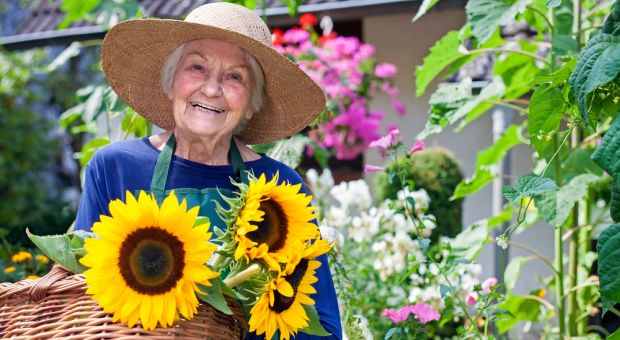
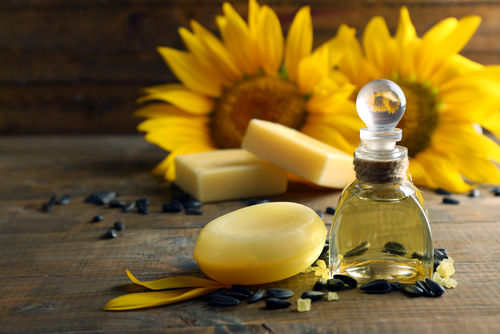

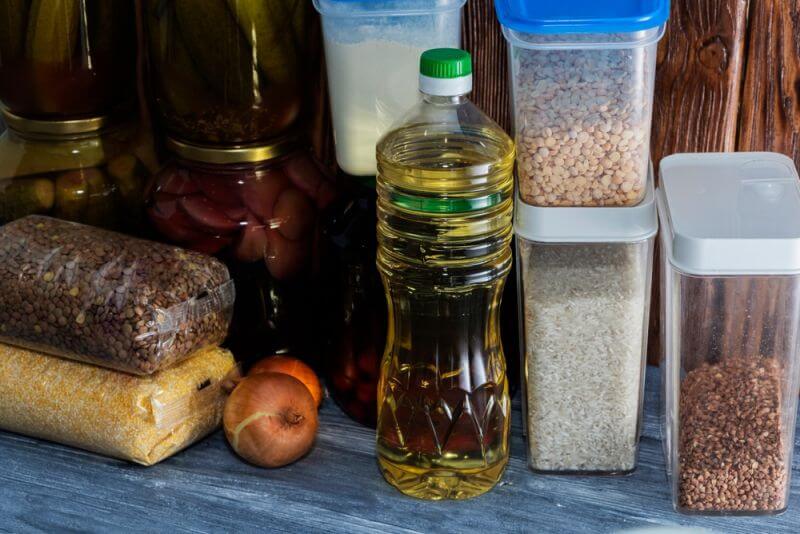

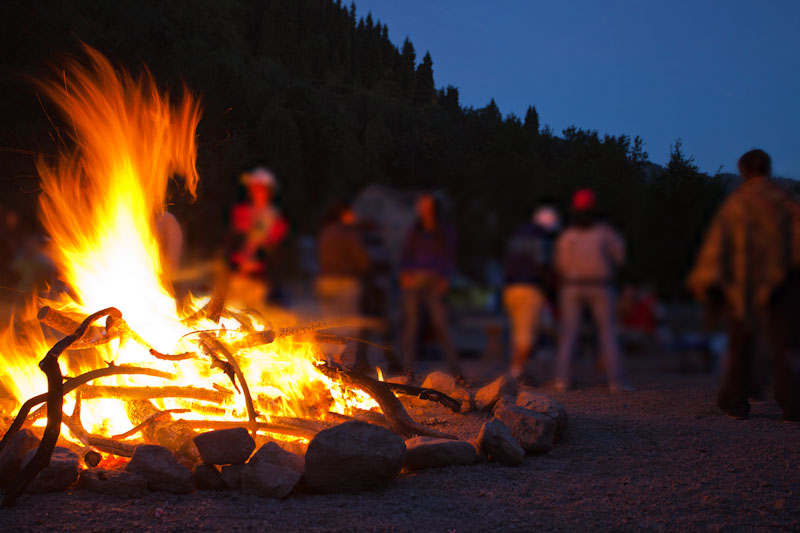
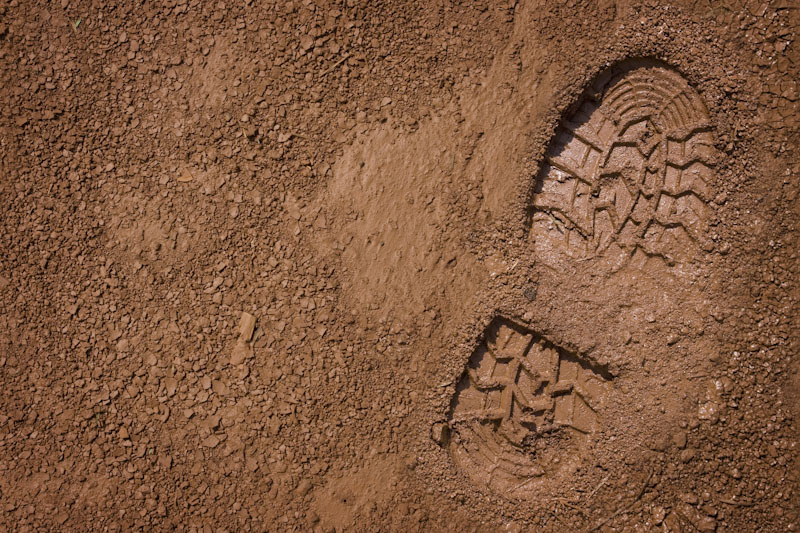

Farmer Phyl | August 23, 2018
|
If you use sunflowers to remove water or soil contaminates, it seems like you are simply moving the contaminates from the ground or water and storing them in the plant mass. Once the plant decomposes does it return the contaminants to the soil? if you burn them does it pollute the air? What do you do with toxic sunflower stalks, leaves and flowers?
Danielpercell | August 23, 2018
|
Farmer Phil,I don’t know for certain your answer.However I do know that catails remove heavy metals and other toxins found at the effluent end of sanitation plants.Pharmacuticals and hormones also.Appearantly the do not retain these toxins in the plants,rather monotomcaly off gas them from the pores in the leaves that are used to’breath’ co2&o2.But don’t take my word as truth.Posibly a real biologist who is involved with catails marshes below sewage treatment facilitys would know the details.
carmela Tyrrell | August 26, 2018
|
Farmer Phyl,
Yes – this is the idea – to take the contaminants out of soil and water that you need to use for survival (for example on your own land) and store them away until you can isolate them and process them into something else. It isn’t a perfect answer, but at least it makes the land and water safer to use.
Beyond that, I don’t know for sure what the sunflowers can and can’t break down or change into safer materials. It all depends on the molecular structure of what they are taking in and if they have means to break it down into smaller pieces. or combine them with something else that is less toxic to us.
DanPercell | August 23, 2018
|
Carmela Tyrell,Great article on sunflowers!They might just become my second favorite plant,next to catails!
MAS | August 24, 2018
|
I have also wondered about the above question of Farmer Phyl regarding , “it seems like you are simply moving the contaminates from the ground or water and storing them in the plant mass. Once the plant decomposes does it return the contaminants to the soil? if you burn them does it pollute the air? What do you do with toxic sunflower stalks, leaves and flowers?”
carmela Tyrrell | August 26, 2018
|
Mas,
If you store the sunflowers in a barrel or away from the land, it won’t get back into it. I would not burn sunflowers, or any other plant used for soil remediation without being sure of what the burning process will do to the target chemicals. In some cases, it might destroy them, in others it might not.
Bill in Idaho | August 24, 2018
|
Carmela, This one is an Incredibly Detailed Article – I Am Impressed ! Subject: Contaminants in Plants – when Burned – are carried in Both the Smoke and the Ash. The distribution (portions) will vary with each unique contaminant (chemical compound).